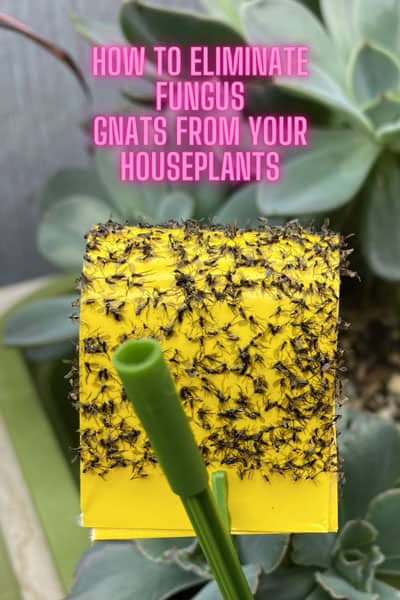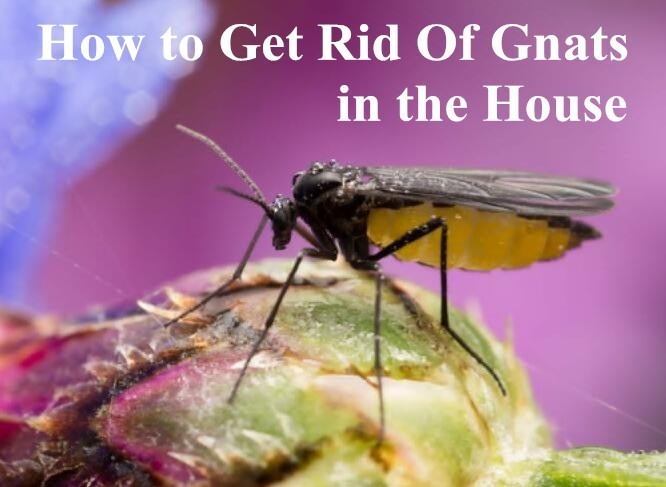The Unwelcome Guests: Identifying House Plant Gnats
House plant gnats are a common problem for indoor gardeners, but identifying them can be a challenge. To effectively learn how to get rid of house plant gnats, it’s essential to recognize the signs of an infestation. Look for tiny flying insects hovering around your plants, especially near the soil surface. These gnats are usually dark-colored and have a slender body. Check for eggs and larvae in the soil, which can appear as small, white, legless creatures. Gnats are also attracted to moisture, so if you notice them clustering around water sources or humid areas, it may be a sign of an infestation. To distinguish gnats from other pests like fruit flies or spider mites, observe their behavior and appearance. Gnats tend to fly in a zigzag pattern and are more likely to be found near the soil, whereas fruit flies are attracted to sweet or fermented substances and spider mites are typically found on the leaves.
The Perfect Storm: Why House Plants Attract Gnats
Fungus gnats are attracted to house plants that provide them with ideal breeding conditions. Overwatering, poor drainage, and high humidity create a perfect storm that invites these pests to infest indoor gardens. When soil is consistently waterlogged, it becomes an ideal environment for gnat eggs to hatch and larvae to thrive. Similarly, poor drainage can lead to stagnant water, which gnats find irresistible. High humidity also contributes to the proliferation of gnats, as they thrive in moist environments. To prevent these conditions, it’s essential to monitor watering schedules, ensure good drainage, and maintain a balanced humidity level. This can be achieved by using well-draining potting mixes, avoiding overwatering, and maintaining good air circulation around plants. By creating an environment that is less conducive to gnat infestations, indoor gardeners can reduce the likelihood of attracting these pests and learn how to get rid of house plant gnats more effectively.
How to Eliminate Gnats from Soil and Plants
To effectively learn how to get rid of house plant gnats, it’s essential to take a multi-pronged approach. Start by repotting the infested plant in fresh, well-draining potting mix. This will help to eliminate any gnat eggs or larvae that may be present in the soil. Next, prune any affected areas of the plant to prevent the gnats from spreading. For more severe infestations, treat the soil with insecticidal soap or neem oil, which are both effective at killing gnats without harming the plant. When using these treatments, be sure to follow the instructions carefully and take necessary precautions to avoid exposure. Additionally, consider introducing natural predators, such as ladybugs or lacewings, to the affected area to help control the gnat population. By following these steps, indoor gardeners can effectively eliminate gnats from their soil and plants, and learn how to get rid of house plant gnats for good.
Natural Deterrents: Repelling Gnats with Essential Oils and Herbs
In addition to eliminating gnats from soil and plants, it’s essential to repel them from the area to prevent re-infestation. One effective way to do this is by using natural deterrents like essential oils and herbs. Certain oils, such as peppermint, lemongrass, and citronella, have natural properties that repel gnats. To create a homemade gnat repellent, mix a few drops of the chosen essential oil with water and spray it around the affected area. This can be done regularly to maintain a gnat-free environment. Herbs like basil, rosemary, and mint can also be used to repel gnats. Simply plant these herbs near the affected area or place them in pots around the indoor garden. By incorporating these natural deterrents into their gnat control strategy, indoor gardeners can learn how to get rid of house plant gnats without relying on chemical pesticides. This approach not only helps to eliminate gnats but also creates a healthier and more balanced indoor ecosystem.
Biological Control: Introducing Natural Predators to the Mix
Another effective way to learn how to get rid of house plant gnats is by introducing natural predators into the indoor garden. Ladybugs and lacewings are two examples of beneficial insects that feed on fungus gnats, helping to control their populations. To introduce these natural predators, start by purchasing them from a reputable supplier or online retailer. Once received, release the ladybugs or lacewings near the affected plants, making sure to follow the supplier’s instructions. These beneficial insects will then hunt and feed on the gnats, helping to eliminate them from the soil and plants. It’s essential to create a welcoming environment for these natural predators by maintaining a healthy and balanced indoor ecosystem. This can be achieved by providing the right temperature, humidity, and food sources for the beneficial insects. By incorporating biological control into their gnat control strategy, indoor gardeners can create a sustainable and long-term solution to getting rid of house plant gnats.
Preventing Re-Infestation: Long-Term Gnat Control Strategies
To ensure that the indoor garden remains gnat-free, it’s essential to implement long-term gnat control strategies. Regular monitoring is crucial in detecting any signs of gnat infestation early on. Check the plants regularly for tiny flying insects, eggs, or larvae in the soil. Good hygiene practices, such as washing hands before handling plants and sterilizing pruning tools, can also help prevent the spread of gnats. Adjusting watering schedules to avoid overwatering and ensuring good drainage can also prevent the ideal conditions that attract fungus gnats. Additionally, maintaining a balanced indoor ecosystem by providing the right temperature, humidity, and light can help prevent gnat infestations. By implementing these strategies, indoor gardeners can learn how to get rid of house plant gnats and enjoy a thriving, gnat-free indoor garden. It’s also important to maintain a consistent gnat control routine, as gnats can quickly re-infest if left unchecked. By staying vigilant and proactive, indoor gardeners can enjoy a gnat-free indoor oasis.
Common Mistakes to Avoid When Dealing with House Plant Gnats
When it comes to learning how to get rid of house plant gnats, it’s essential to avoid common mistakes that can exacerbate the infestation. One of the most significant mistakes is overusing chemical pesticides, which can harm the plants and the environment. Instead, opt for natural and organic methods of gnat control, such as insecticidal soap or neem oil. Neglecting soil quality is another common mistake that can lead to gnat infestations. Make sure to use high-quality potting soil that drains well and is rich in organic matter. Failing to monitor the plants regularly can also lead to gnat infestations. Regularly check the plants for signs of gnats, such as tiny flying insects, eggs, or larvae in the soil. Additionally, avoid overwatering and ensure good drainage to prevent the ideal conditions that attract fungus gnats. By avoiding these common mistakes, indoor gardeners can increase their chances of successfully getting rid of house plant gnats and enjoying a thriving, gnat-free indoor garden.
Conclusion: Enjoying a Gnat-Free Indoor Garden
In conclusion, banishing fungus gnats from your indoor oasis requires a comprehensive approach that includes identifying the signs of infestation, understanding the ideal conditions that attract gnats, and implementing effective control strategies. By following the steps outlined in this article, including repotting, pruning, and treating the soil with insecticidal soap or neem oil, indoor gardeners can learn how to get rid of house plant gnats and enjoy a thriving, gnat-free indoor garden. Additionally, incorporating natural deterrents, biological control methods, and long-term gnat control strategies can help prevent re-infestation and maintain a healthy indoor ecosystem. By avoiding common mistakes and staying vigilant, indoor gardeners can create a beautiful and pest-free indoor oasis that brings joy and serenity to their lives. Remember, with patience, persistence, and the right strategies, it’s possible to get rid of house plant gnats and enjoy a gnat-free indoor garden.








